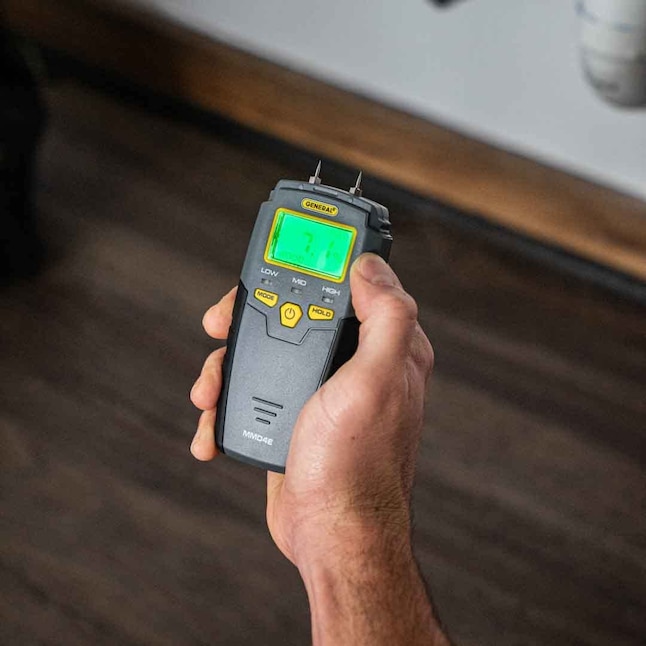Exactly How a Moisture Meter Can Boost Your Building And Construction Projects and Avoid Damage
Delve Into the World of Moisture Meters: Whatever You Need to Know
In the world of moisture meters exists a globe of precision and usefulness that typically goes undetected. Understanding exactly how moisture meters operate, the different kinds available, and their diverse usages can shed light on their relevance in guaranteeing high quality and performance.
How Moisture Meters Work
Moisture meters run by gauging the electrical conductivity or capacitance of materials to establish the moisture material existing. These meters are indispensable devices across different sectors, including farming, woodworking, and construction. By using various methods such as pinless or pin-type technology, wetness meters provide precise analyses that aid professionals make educated decisions.
Pin-type moisture meters work by placing the sharp pins into the material being checked. On the other hand, pinless moisture meters utilize electro-magnetic signals to scan a larger location without causing any kind of damage to the material's surface.
Despite the method used, moisture meters play an important role in preventing issues such as mold and mildew growth, architectural damage, or product issues brought on by excess dampness. Understanding just how these meters job is crucial for ensuring the quality and stability of products in different applications.
Kinds Of Moisture Meters
Provided the important duty dampness meters play in numerous sectors, it is important to understand the various types readily available to experts for precisely evaluating dampness degrees - Moisture Meter. There are mainly 2 main kinds of moisture meters: pin-type and pinless wetness meters

On the various other hand, pinless moisture meters make use of electromagnetic sensing unit plates to scan a bigger area of the product without causing any type of damages. This type appropriates for rapidly scanning huge areas and is generally used for floor covering, wall surfaces, and ceilings. Pinless meters are practical for taking analyses on finished surfaces without leaving any kind of visible marks.
Both kinds of moisture meters have their benefits and are chosen based on the specific demands of the job available. Understanding the differences in between these types is critical for professionals to make exact moisture evaluations.
Applications Across Industries
With varied functionalities, wetness meters locate prevalent application across numerous markets, helping professionals in making sure optimal conditions for products and structures. In the agriculture market, moisture meters are vital for determining the wetness web content in grains, seeds, and hay, guaranteeing top quality control and preventing mold development. Building professionals count on moisture meters to examine the dampness degrees in building materials like concrete, drywall, and timber, which is important for maintaining structural honesty and preventing problems like rot or mold and mildew. The flooring market utilizes dampness meters to determine the dampness material in subfloors prior to installing go to this web-site different flooring, protecting against pricey damages because of excess moisture. In addition, in the food industry, moisture meters are used to monitor and control moisture degrees in items such as grains, nuts, and dried out fruits to preserve quality and high quality. In addition, dampness meters play an essential duty in the reconstruction and damages assessment market by assisting professionals identify and deal with water damage in buildings immediately. Across these varied sectors, wetness meters are essential tools for ensuring the quality, security, and longevity of numerous materials and items.
Tips for Using Moisture Meters
Make use of the dampness meter's calibration settings to guarantee precise readings when determining the dampness web content in various products. Calibration is critical for the appropriate functioning of a moisture meter. Prior to each use, it is advisable to examine and readjust the calibration settings according to the particular product being examined. In addition, ensure the meter is established to the right moisture array for the product you are determining to obtain the most exact outcomes.
When making use of a pin-type wetness meter, put the pins to the ideal deepness advised for the material being checked. This makes certain that the wetness readings are drawn from the correct depth within the product, offering a much more precise representation of its dampness material. For pinless moisture meters, remember to keep appropriate contact with the material's surface area to obtain trusted readings.
Consistently examine and replace the batteries in your dampness meter to stop incorrect readings as a result of low power. Shop the meter in a safe and dry place when not in usage to prolong its life-span and keep its precision. By complying with these ideas, you can optimize the efficiency of your dampness meter and obtain accurate wetness web content dimensions throughout various products.
Upkeep and Calibration
To guarantee the accuracy of moisture content measurements, normal upkeep and calibration of the dampness meter are crucial actions in its correct performance. Calibration changes the wetness meter to guarantee that it offers constant and see this website dependable results.
Calibration needs to be done regularly, especially if the dampness meter is utilized frequently or in crucial applications where accurate measurements are called for. By calibrating the moisture and preserving meter frequently, users can trust the precision of the wetness content dimensions obtained.
Verdict

To conclude, dampness meters play an essential duty in numerous industries by properly measuring the wetness web content of products. Understanding just how these devices work, the various kinds available, and proper maintenance and calibration are necessary for obtaining reputable outcomes. Whether in farming, production, or construction, the here are the findings use of dampness meters aids make certain quality assurance and efficiency in processes.

In verdict, dampness meters play an important function in numerous industries by accurately measuring the wetness web content of products.